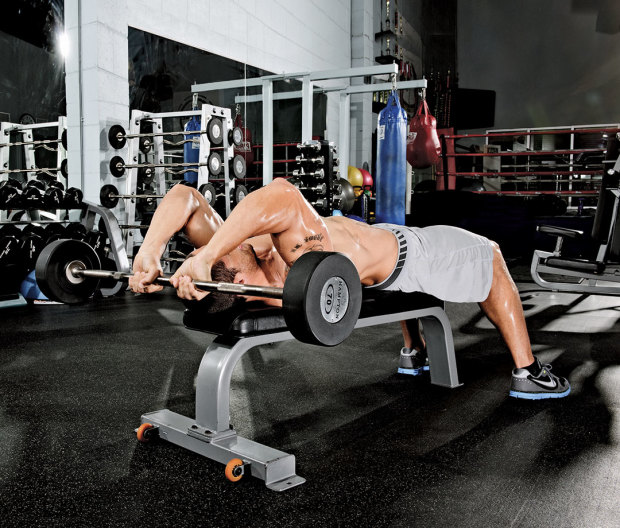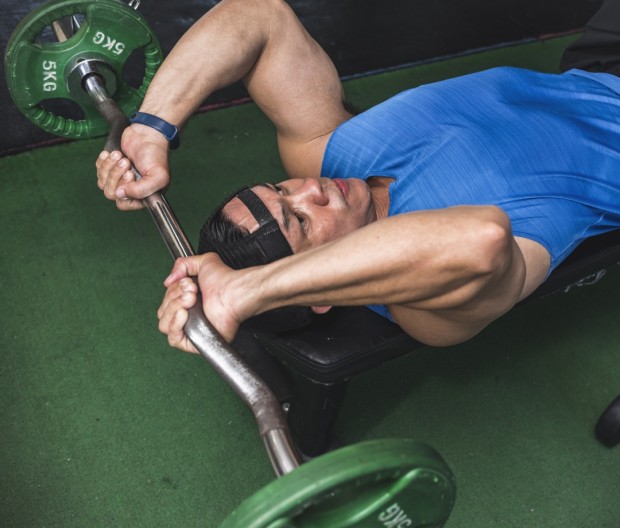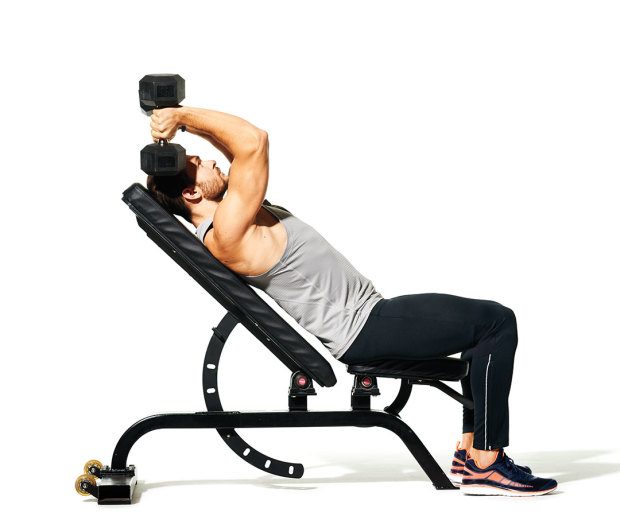[ad_1]
Skull crushers sometimes get dismissed as just a bodybuilding move to sculpt massive triceps and beef out a T-shirt—not that there’s anything wrong with that. But the three-headed triceps brachii muscle, the chief beneficiary of skull crushers, plays a crucial role in sports and the movements of everyday life, working with the lats to bring the arm toward the body and playing a huge role in the extension of the elbow joint.
Skull Crusher Benefits
Skull crushers are a triceps exercise mainstay, but underrated for their value in building coordination between the upper back and triceps. The triceps are more than showy beach muscles. Try getting through your day without the tris. You’ll be unable to sign your name, lift a glass, or wash your hair. As for sports, Giannis Antetokounmpo couldn’t launch a jumper or dunk a basketball without his massive tris anchoring the ball. Nor could Caeleb Dressel glide through the water with a powerful butterfly or freestyle stroke without long, lean tris supporting his 6-foot-4-inch wingspan.
What Muscles Do Skull Crushers Work?
One of the best exercises to build strength and mass in your triceps, skull crushers also work on the stabilizer muscles of your shoulders. During the movement, the tris work with the pectorals and anterior deltoids to push the weight up and control it during the lowering phase.

Dustin Snipes
How to Do Skull Crushers
- Lie on a bench with a straight barbell or EZ bar on your lap. Place hands shoulder-width apart on the bar with palms facing down and wrists straight.
- Raise the bar above your collarbone.
- While keeping your shoulders stable, slowly bend at the elbows, bringing the weight down just past your head. Keep the elbows pointing straight ahead as you lower the weight. Hold for a count of two.
- Straighten your elbows, pushing the weight back to the overhead starting position. Be sure to keep your arms perpendicular to your body and only extend your elbows.
- Pro tip: Keep your elbows in. Allowing them to flare out takes the load off the triceps. Likewise, if you let your arms move back and forth, you put a load on your shoulders, which takes away the muscle- and strength-building benefit to the triceps and can lead to injury.
Related: Best Well-rounded Workout Routines for Men
How to Add a Skull Crusher Into a Workout
The skull crusher is a versatile move when it comes to organizing your workout, and a foundational one for a triceps-focused routine. As an upper-body push, it fits nicely between upper-body pull exercises or lower-body movements. Since it’s possible to go heavier with skull crushers—as opposed to bodyweight triceps moves like bench dips or diamond pushups—it makes sense to have skull crushers later in a triceps workout.
Best Skull Crusher Variations
Skull crushers offer so many variations that some view the exercise as a series of moves rather than just one. As with any movement, start with a light weight to master the move, then increase weight accordingly.

Michael Edwards/Getty Images
How to Make Skull Crushers Easier
Going with a lighter weight (or simply the bar) is recommended for beginners or even newcomers to skull crushers to master form before adding weight. A lying cable skull crusher may or may not be easier, but dealing with cable resistance instead of iron at least eliminates the slight possibility of hitting your face or head. The cable forces you to keep tension in the cables and thus engage your triceps throughout the move.
Related: How to Do a Dumbbell Pullover, the Upper-body Exercise to Rule Them All

James Michelfelder
How to Make Skull Crushers Harder
The most popular variation—with dumbbells—might seem more manageable than its barbell counterpart. But it’s actually more of a challenge to keep the elbows in and avoid taking the load off the triceps and putting it on the shoulders. Skull crushers performed on a bench at a slight incline add to the degree of difficulty. With the incline, you’re increasing the stretch on the triceps and targeting the muscle from different angles.
[ad_2]
Source link

Hi! I’m a dedicated health blogger sharing valuable insights, natural remedies, and the latest scientific breakthroughs to help readers lead healthier lives. With a holistic approach to wellness, I empower individuals with accessible and actionable content, debunking myths and offering practical tips for incorporating healthy habits.